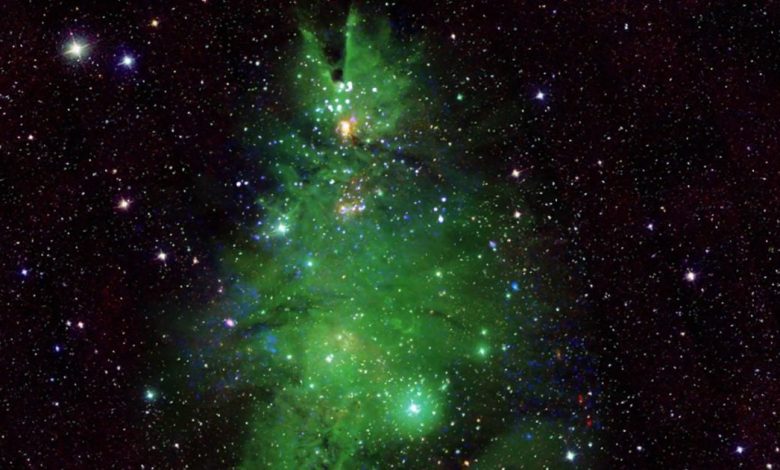NASA Releases Photos Of Christmas Tree Cluster

NASA has gotten into the Christmas spirit.
In their latest press release, NASA shared a photo of a celestial formation nicknamed the Christmas Tree cluster.
NASA made his discovery known in a press release and a post on X with the caption, “It’s beginning to look a lot like the cosmos.”
Take a look:
It’s beginning to look a lot like cosmos. 🎶
Our @ChandraXray Observatory recently spotted the blue-and-white lights that decorate the “Christmas Tree Cluster,” a swarm of stars and gas some 2,500 light-years from Earth: https://t.co/VT2WaLgp77 pic.twitter.com/HrnrmxRyd7
— NASA (@NASA) December 19, 2023
Here’s what USA Today reported:
It seems NASA is getting into the holiday spirit.
Just in time for Christmas, the space agency released a new image earlier this week of a celestial formation known as the “Christmas tree cluster.”
One glance at the photo will reveal why the formation earned the festive moniker.
The space agency shared the photo Tuesday on X, formerly Twitter, complete with a description playing on a familiar Christmas carol: “It’s beginning to look a lot like the cosmos,” NASA intoned.
“It’s beginning to look a lot like cosmos” 🎄
NASA has found a “Christmas Tree Cluster” of young stars that are millions of years old – some of which are larger than the sun – putting on a sparkling show roughly 2,500 light-years from Earth. https://t.co/U9HVMcnt6x pic.twitter.com/QnJNpVsi9e
— CBS News (@CBSNews) December 20, 2023
Per NASA:
This new image of NGC 2264, also known as the “Christmas Tree Cluster,” shows the shape of a cosmic tree with the glow of stellar lights. NGC 2264 is, in fact, a cluster of young stars — with ages between about one and five million years old — in our Milky Way about 2,500 light-years away from Earth. The stars in NGC 2264 are both smaller and larger than the Sun, ranging from some with less than a tenth the mass of the Sun to others containing about seven solar masses.
This new composite image enhances the resemblance to a Christmas tree through choices of color and rotation. The blue and white lights (which blink in the animated version of this image) are young stars that give off X-rays detected by NASA’s Chandra X-ray Observatory. Optical data from the National Science Foundation’s WIYN 0.9-meter telescope on Kitt Peak shows gas in the nebula in green, corresponding to the “pine needles” of the tree, and infrared data from the Two Micron All Sky Survey shows foreground and background stars in white. This image has been rotated clockwise by about 160 degrees from the astronomer’s standard of North pointing upward, so that it appears like the top of the tree is toward the top of the image.


